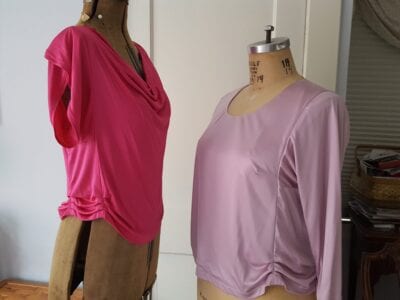
The topic of the day is silk jersey, a luxuriously soft, drapey knit that is really quite special. If you have never sewn with silk jersey, our tips will help you sew successfully with this tricky fabric.
Like most knits, silk jersey is a great choice for making Tabula Rasa Knit (TRK) tees and tunics. Silk jersey comes in solids or prints with luminous color. As with most silk fabrics, it sparkles in the light. It is the perfect fabric to make a tee or tank to wear under a dressy jacket or a dramatic tunic to wear for a special event.
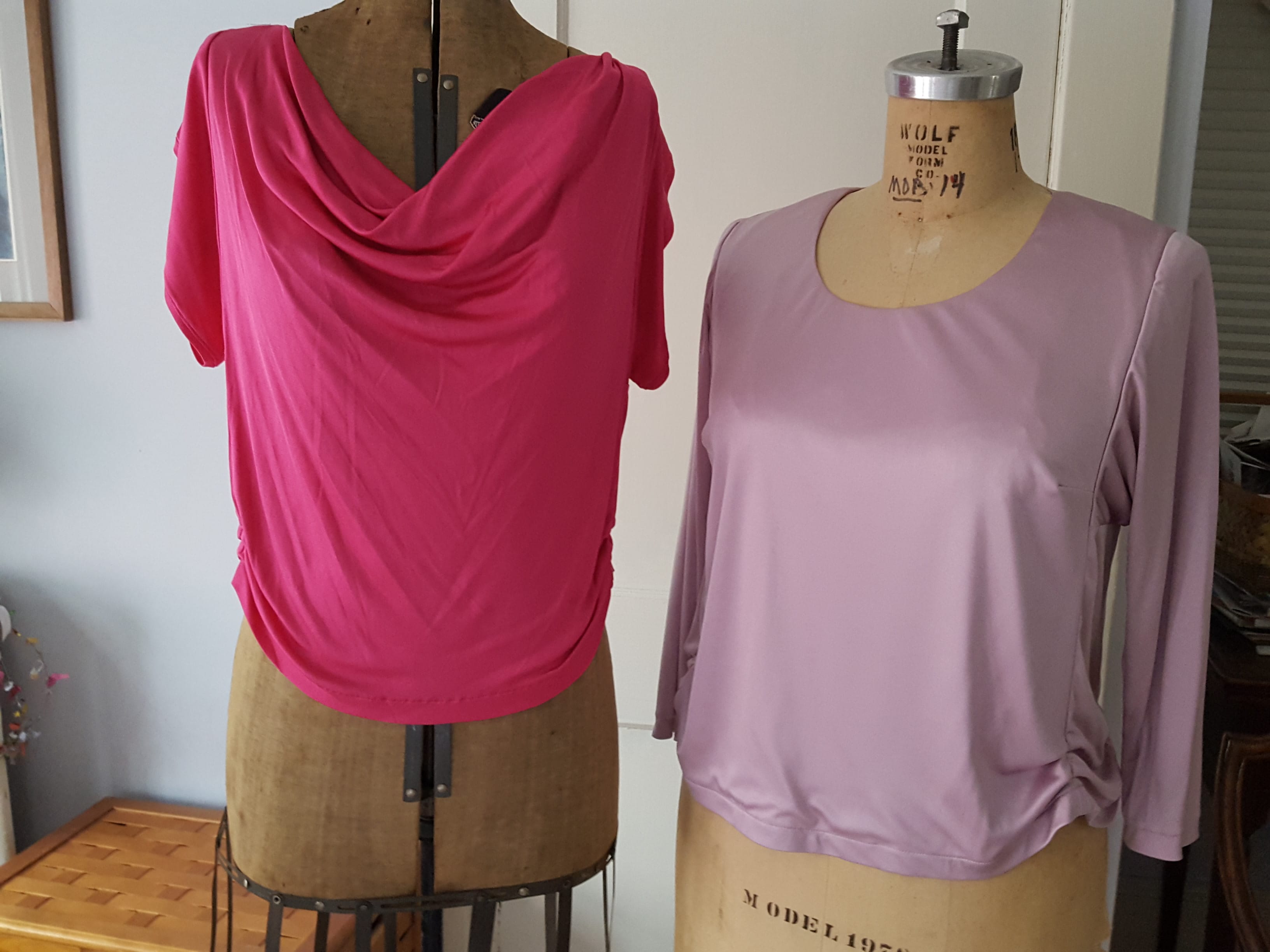
Here are some tips to help you design and sew silk jersey:
- Choose designs that fit softly. Silk jersey is not usually knitted with spandex so it is not graceful when stretched tightly against the body.

- Add drapey details like the swing side of the basic TRJ, the draped front version of the Wide Neckline Variations, and the tulip sleeve or pleated sleeve detail in the Clever Crossings Variations.

- Silk jersey can run (like stockings) if the raw edges are stretched. Finish your raw edges well. I use a serger set for a three thread overlock for the edge finishes. Keep a bottle of fray check or other fabric glue near by to stop any run in the seam allowance before it extends into the garment. If you are not familiar with knits that run, take a scrap of silk jersey and stretch it to see if runs pop along the edges.
- Sew with a new, fine (size 70) jersey needle and make some stitching samples to assure that it stitches smoothly and does not cause the fabric to pop runners.
- If you use a classic knit band finish, keep it narrow and cut the band out along the fabric’s stretchiest direction.

- Consider using classic woven fabric construction techniques, such as a faced neckline, so you can include an interfacing. Envy Silk is a great choice to support the finishes.
- The fabric can be clingy even if the garment is styled loosely. A double layer of fabric will help minimize this close drape. In this pink top, two fronts and backs were cut and one set was interfaced around the neck. Each set was seamed together at the shoulder. Then the two layers were pinned right sides together and seamed around the neckline.

- The seam was clipped, graded, edge stitched and flipped to create front and back neck finishes. The two layers were basted together along the side seams and hems before the final construction steps.
- Consider softly interfacing a classic 1 ¼” turned up hem, but make a test sample to see if the interfacing shows through or distorts the fabric.

- For a pretty, drapey hemline cut the top with 1-2 extra inches of length and use the pleating technique for sleeves (found in the Clever Crossings Variations) on each of the seams that connects the side panels to the fronts and backs. This is my favorite silk jersey hemline.

- Even though silk jersey is soft and fine, it is warm so it can be used to make undergarment layers like long underwear. Look for silk blended with other fabrics and knitted in tricot or jersey for these undergarments. Pre-wash undergarment fabric so it will be easy to care for.
You can find silk jersey in fine fabric stores and some online fabric stores. SarahVeblen.com and moodfabrics.com carry a number of solid color options. Mood also has a selection of prints. Keep an eye out for silk jersey where ever you shop for fine fabrics.
Knits are so comfortable to wear so why not choose silk jersey to stitch up a dressy look? But a word of warning, don’t choose it for your first knit sewing project.
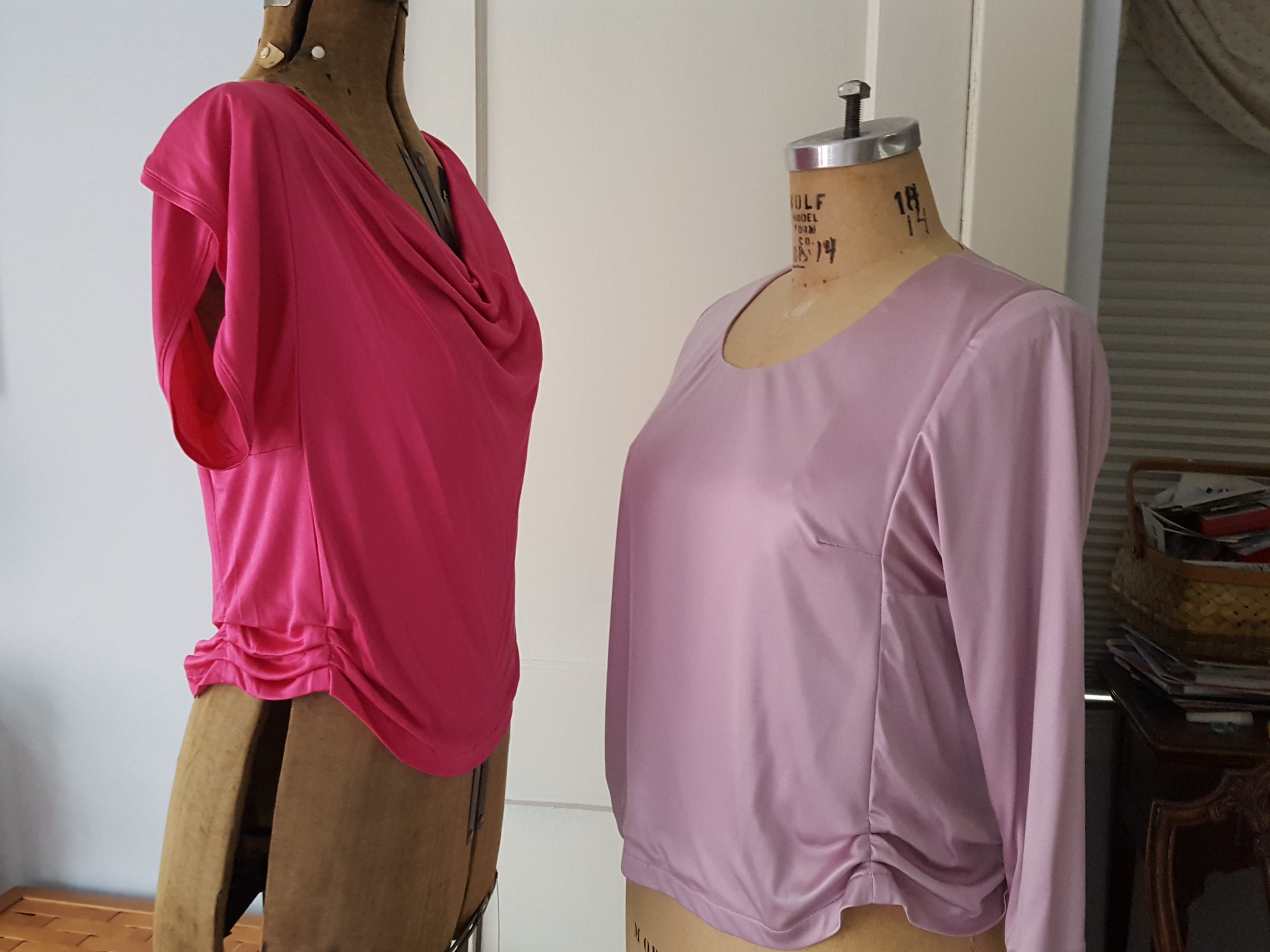
Have you sewn with knit jersey? Where did you purchase it? What tips can you share?
Happy Sewing, RAE




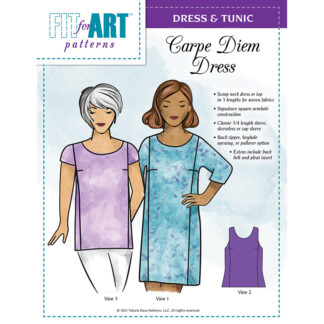

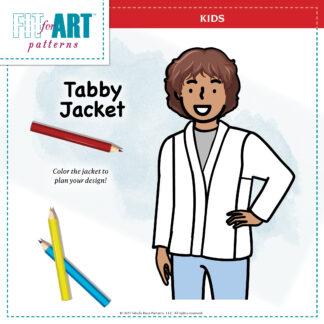
Great tips for sewing with this luxurious fabric. Thank you.
I love that double layer idea since I’ve noticed silk jersey being a little too clingy on my lumps and bumps. I’ve had some in my stash forever so the idea alone makes me think go ahead and enjoy it.
Jane, cannot wait to see what you make! RAE